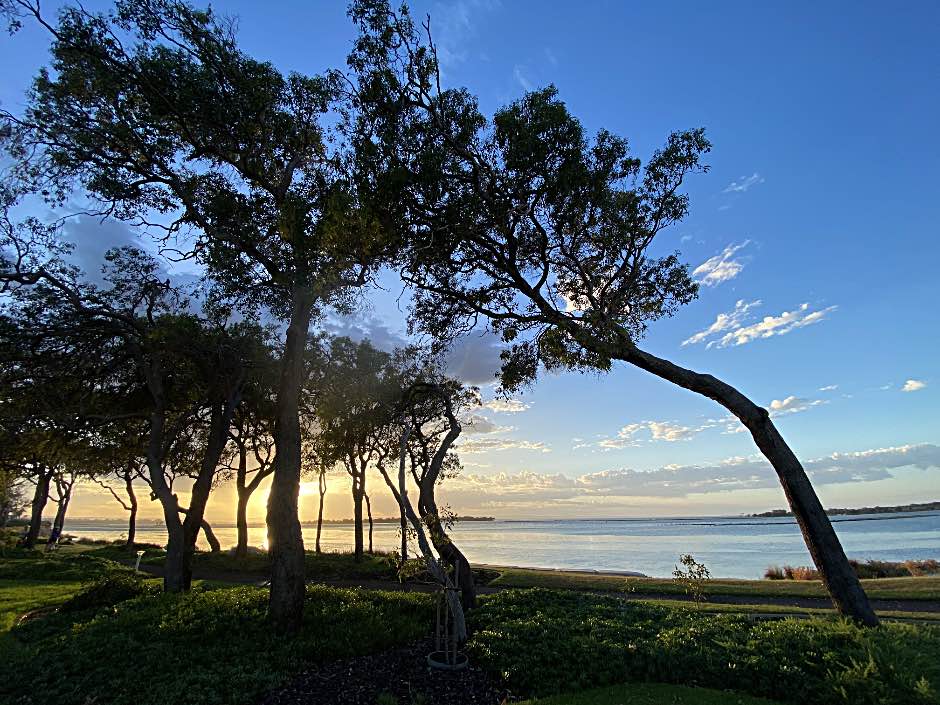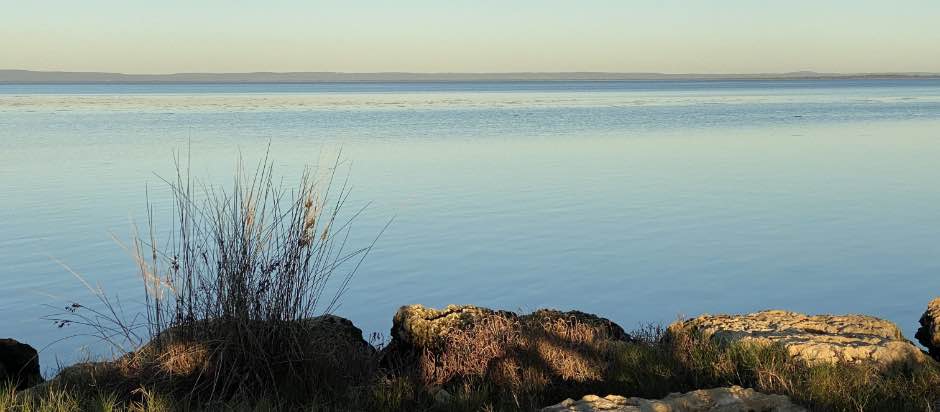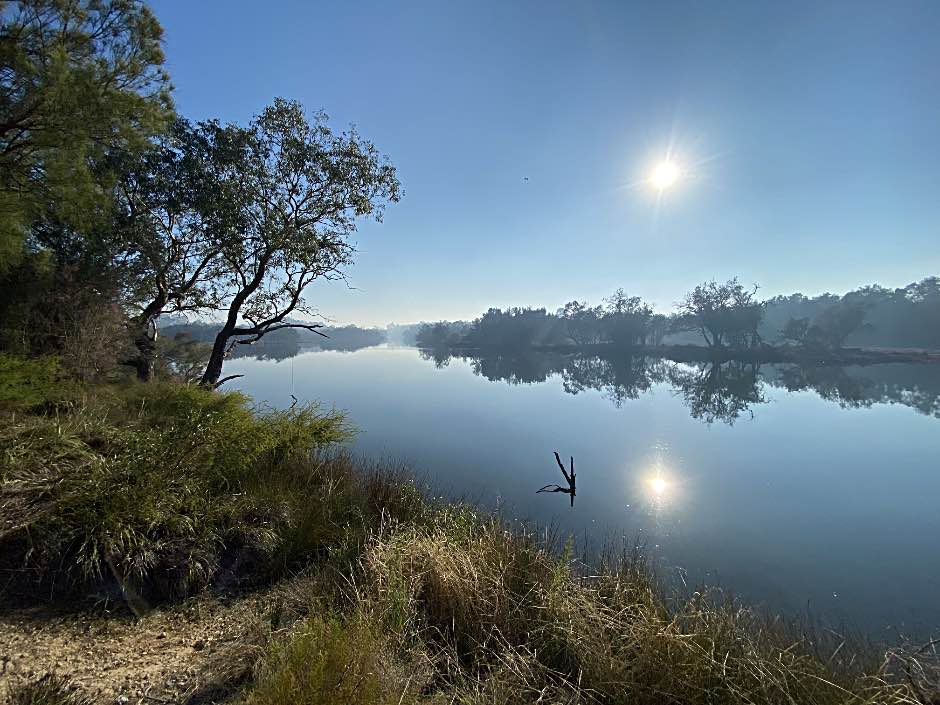
Offshore windfarmsMainly in regard to their adoption in Australia
There is a huge amount of information on offshore wind farms on the Internet. Much of it accurate and valuable, some of it inaccurate and misleading, even intentionally so. This page, like my other pages on wind power, aims to honestly provide the basic facts and point people toward the more credible and reliable sources of information. All wind farms, all large industrial installations, have impacts, environmental and social. This page attempts to give unbiased information on the pros and cons of offshore wind farms.
Contact: David K. Clarke – © |
A part of Wattle Point Wind Farm on SA's Yorke Peninsula; an onshore wind farm
|
|---|

|
Wattle Point Wind Farm, Photo token 2016/06/19 |
I have been aware of some of the proposed offshore wind farms for years, but the thing that caused me to start this page was a nonsensical opposition publication that I happened to read about a proposed offshore wind farm in NSW. It reminded me of the rubbish that I had read about onshore wind farms when they were a new development: baseless and ignorant predictions of disaster.
In February 2024 a federal politician, Andrew Hastie, in Western Australia joined in. He ran a dishonest scare campaign over a proposed offshore wind farm zone near my home in Mandurah. I would have hoped that the great success of onshore wind power in the generation of electricity and the reduction of emissions would have led to a more knowledgable response to the development of offshore wind power, but it seems that the ignoramuses, liars and rumourmongers are going to be active again, as they were in the early years of onshore wind power development in Australia.
Mid-North South Australia, where I have lived most of my life, was one of the first areas in Australia to be developed for wind power. Between about 2007 and 2017 there were more wind farms and wind turbines in Mid-North SA than anywhere else in the country. And it was, and is, a great success. In the year up to the time I started this page more than 70% of South Australia's electricity was being generated renewably, and more than 45% generated by SA's wind farms, the great majority of which were in the northern areas.
|
Declaration of interestI am strongly in favour of replacing Australia's fossil fuel fired generation with renewable energy. The burning of fossil fuels is widely recognised as the main cause of climate change, ocean acidification, sea level rise and ocean warming. The air pollution from the burning of fossil fuels kills millions of people world-wide each year.I have long striven against anyone who dishonestly opposed wind power developments in South Australia where I have lived until the last two years. But above all, I love truth, honesty, justice and high ethical standards. I now live in Mandurah in Western Australia about 40 kilometres from a proposed offshore wind farm zone.
My opinion is that any social or economic impact on the local community will tend to be more positive than negative. I have written on this elsewhere on this page. |

|
The damage to our beautiful shared planet is increased the longer we put off serious action on reducing emissions. WA images, Peel lagoon, 2022/06/02 |
What is the present situation in regard to offshore wind power in Australia
Australia has been in the fortunate position of having many high quality onshore wind farm sites available to it, so has not had to build the more expensive offshore farms. Europe, being densely populated, did not have so many available onshore opportunities. As the best onshore sites have been taken up in Australia, offshore sites are becoming more competitive. Offshore winds tend to be stronger and more consistent than winds over land, and Australia has the advantage of having access to technology that has been developed and proven overseas.
|

|
If we are to retain the world in good condition for future generations we must give a higher priority to the environment and replace polluting fossil fuels with renewable energy. WA images, Peel lagoon, 2023/02/05 |
Impacts: on the natural environment
Offshore wind farms have many of the same implications as onshore wind farms. I have written extensively about wind power problems, alleged problems and objections in regard to onshore wind farms on another page on this site. There are two types of offshore wind turbines: those that have foundations in the seabed, and those that float but are anchored to the seabed. Floating turbines are used in the deeper waters, beyond about 60 metres. Offshore turbines with fixed foundations have been built for many years, floating turbines are a later development. Offshore wind farm developments have some specific concerns:
There is a large amount of information available on the Internet, some of the more informative I have referenced elsewhere on this page.
A number of the proposed offshore wind farms will have floating turbines, rather than turbines with foundations in the seabed. An article by NOAA (US National Oceanic and Atmospheric Administration) titled Frequent Questions—Offshore Wind and Whales is relevant to the whale impact question.
Impacts: economical, recreational, etc.I have written about impacts on the natural environment elsewhere on this page.Some concern has been expressed about the impacts that the offshore wind farms might have; I have tried to cover the possible environmental impacts in the section on Questions. The proposed wind farms will be, at their closest points, at least five kilometres from the coast (some as much as 20km). So things that are very unlikely to be impacted include:
There will be many employment and contracting opportunities and increased business for local service industries during construction. There will be some long term employment for turbine and electrical infrastructure maintenance.
The myth that offshore wind turbines kill whalesIn the period around the later months of 2023 those who have been opposing offshore wind farm developments have been spreading the myth that offshore wind farms kill whales. The simple truth is that wind turbines, and offshore wind farm surveys, do not kill whales.
Article by NOAA (US National Oceanic and Atmospheric Administration) titled Frequent Questions—Offshore Wind and Whales. Are offshore windfarms a problem for whales?; Cosmos, Jacinta Bowler, 2023/08/08. The Australian ABC's Media Watch had a very informative session on the misleading information being spread by the less scrupulous sections of the media (and by leader of the federal opposition, Peter Dutton) on 2023/11/13. I have included a transcript of that program in Appendix B on this page.
More references could be found in the Media Watch transcript.
|

|
We must put aside our selfish wants and look carefully for the truth and sound evidence if we are to do our best for our shared environment. WA images, Peel lagoon |
Where can you find the truth about wind power?
The ideal is to go to peer-reviewed articles that have been published in the established, reputable, science journals. But unfortunately these are not easily understood by the layman. The reputation of scientists depends on their honest conducting of, and reporting of, research. Articles in The Conversation have been written by academics; I find it one of the best sources of reliable information accessible to lay people. Government and semi-government agencies that provide reliable information in Australia include the CSIRO and the Bureau of Meteorology. A particularly relevant page is Myth busting about offshore wind farms; Australian Department of Climate Change, Energy, the Environment and Water. Some other sources I've found to be reliable are: Guardian Australia, Renew Economy and the ABC. The reliability (or otherwise) of sources can be checked through fact-checking sites. Two that I have used are Source Watch and Snopes. Others are Politifact and FactCheck.org. Valuable information can be found from the social networks, but be careful who you believe. Notably unreliable sources are the Murdoch media and shock jocks such as Andrew Bolt and Alan Jones. Also see the Related pages section of this page.
|

|
This wonderful world is worth far more than the profits from the fossil fuel industries. WA images, Serpentine River, 2022/05/09 |
AppendicesAppendix A: Chat GPT on judging the reliability of sourcesThe following is the reply I had from ChatGPT when I asked the question "Where can reliable information be found on the internet, and how can one avoid the unreliable sources?""Finding reliable information on the internet can be a challenge, given the vast amount of content available. Here are some strategies to help you find trustworthy sources and avoid unreliable ones:All the above is, in my view, excellent advice. Getting advice from robots and the reliability of artificial intelligence such as ChatGPT are subjects that are far too big for me to go into here. But one point I will make is that AI robots can only get their information from sources that are accessible to them. Many of the very reliable sources, such as academic journals, are behind a paywall and may not be available to applications like ChatGPT.
Appendix B: wind turbines and whalesThe following is the transcript from ABC's Media Watch of 2023/11/13."But now to whales and wind turbines, and culture warriors switching sides:The ABC's Media Watch program, in my opinion, is one of the most valuable programs to those who are concerned with the truth on Australian television. |
|
|
References and related pages
External sites...International...Offshore wind power; Wikipedia. In the context of this page the section on Environmental considerations is particularly interesting.
Guide to a Floating Offshore Wind Farm, the guide was launched in March 2023; Article by NOAA (US National Oceanic and Atmospheric Administration) titled Frequent Questions—Offshore Wind and Whales. Are offshore windfarms a problem for whales?; Cosmos, Jacinta Bowler, 2023/08/08. Offshore wind farm construction is noisy – but gadgets used to protect marine mammals are working; The Conversation, 2023/01/19, written by Isla Graham, Research Fellow, School of Biological Sciences, University of Aberdeen Environmental Impacts of Offshore Wind Power Production in the North Sea; A Literature Overview; WWF
Potential environmental effects of deepwater floating offshore wind energy facilities, Elsevier, Ocean and Coastal Management, written by Hayley Farr, Benjamin Ruttenberg, Ryan K. Walter, Yi-Hui Wang and Crow White; 2021/06/15
Australia, external sites...This seems to be a particularly useful site: Myth busting about offshore wind farms; Australian Department of Climate Change, Energy, the Environment and WaterOffshore wind farm map of Australia, by RenewEconomy Articles on Offshore wind [farms, power]; The Conversation, September 2023 Offshore wind presents energy advantages as part of growing Australian blue economy, CSIRO, 2021/07/22 Offshore wind will come to Australian waters – as long as we pave the way for this new industry; The Conversation, 2022/03/11, written by Llewelyn Hughes and Thomas Longden. Relating to the Victorian government's targets for offshore wind capacity of 2 GW by 2032, 4GW by 2035, and 9GW by 2040. How a false claim about wind turbines killing whales is spinning out of control in coastal Australia; written by Adam Morton, Jordyn Beazley and Ariel Bogle, for The Guardian, 2023/11/12.
On this site...Relating to wind powerWind power in AustraliaWind power problems, alleged problems and objections Bird deaths from wind turbines A Teal candidate for the electorate of Canning?: the current incumbent, Andrew Hastie, is opposing the proposed 20GW offshore wind farm zone. His statements on the wind farm zone are dishonest and misleading. Can we replace him with a progressive, honest, climate-aware community independent? Western Australia's offshore wind farm zone Relating to environmentEarth or cheap energy?Relating to ethicsEthics, some thoughtsSelf or all? Selfishness or altruism? Contribution; positive, negative, or nothing? Compassion, not just for our fellow humans, but for the whole biosphere Donald Trump, a symptom and example of selfishness |